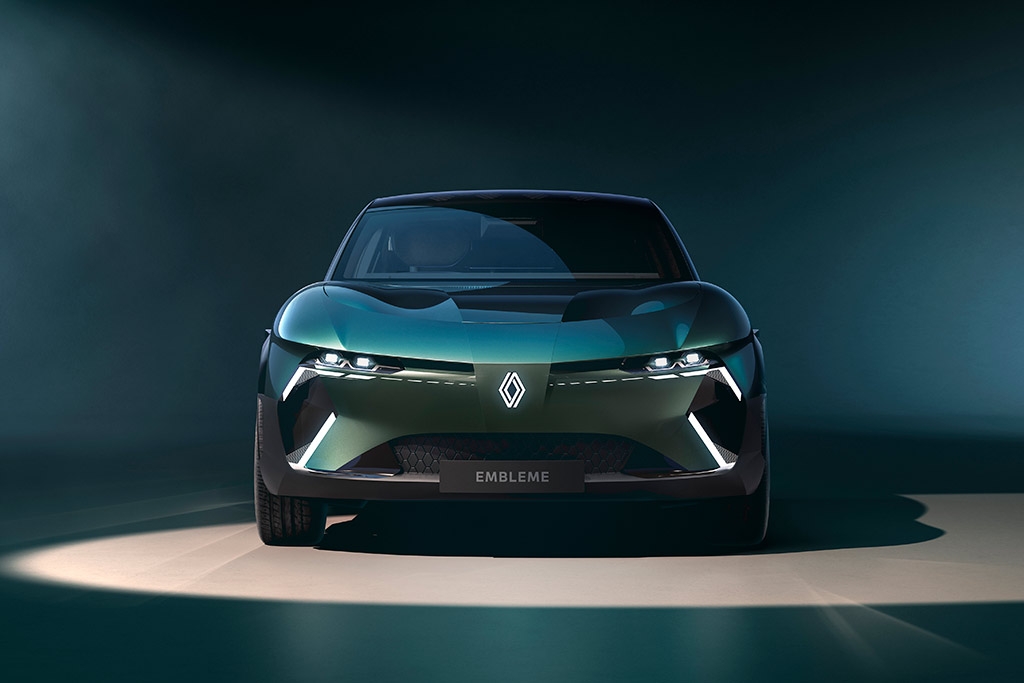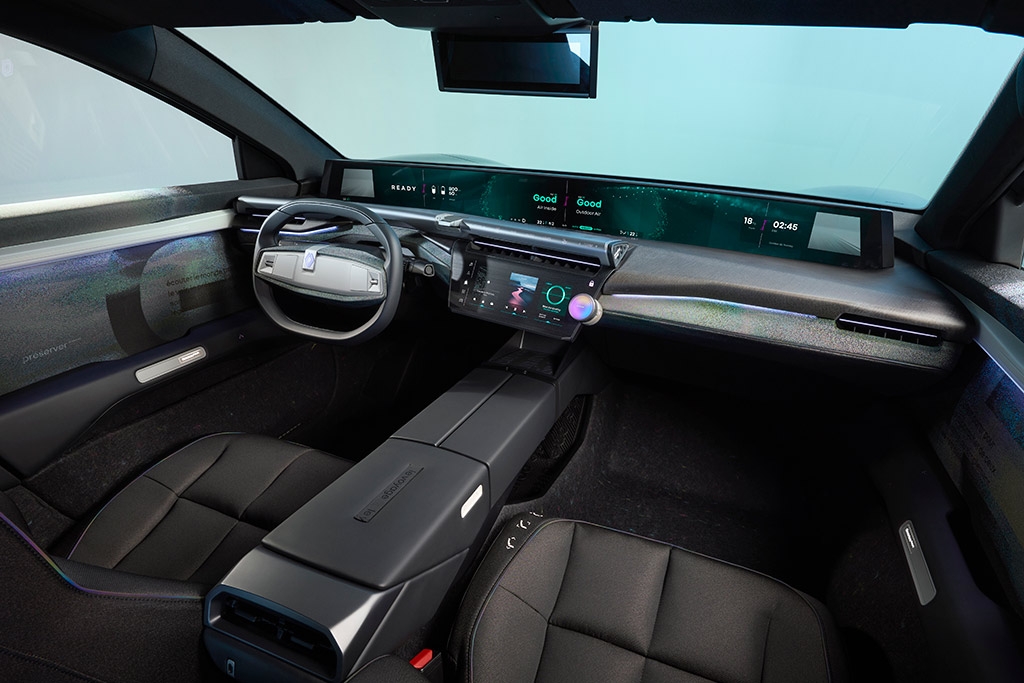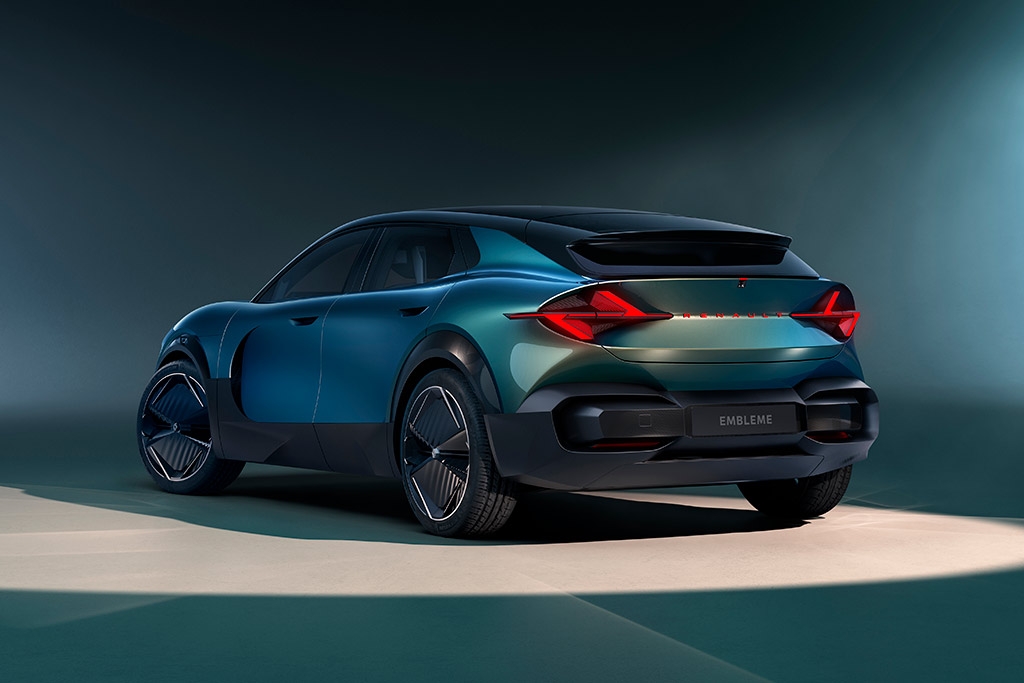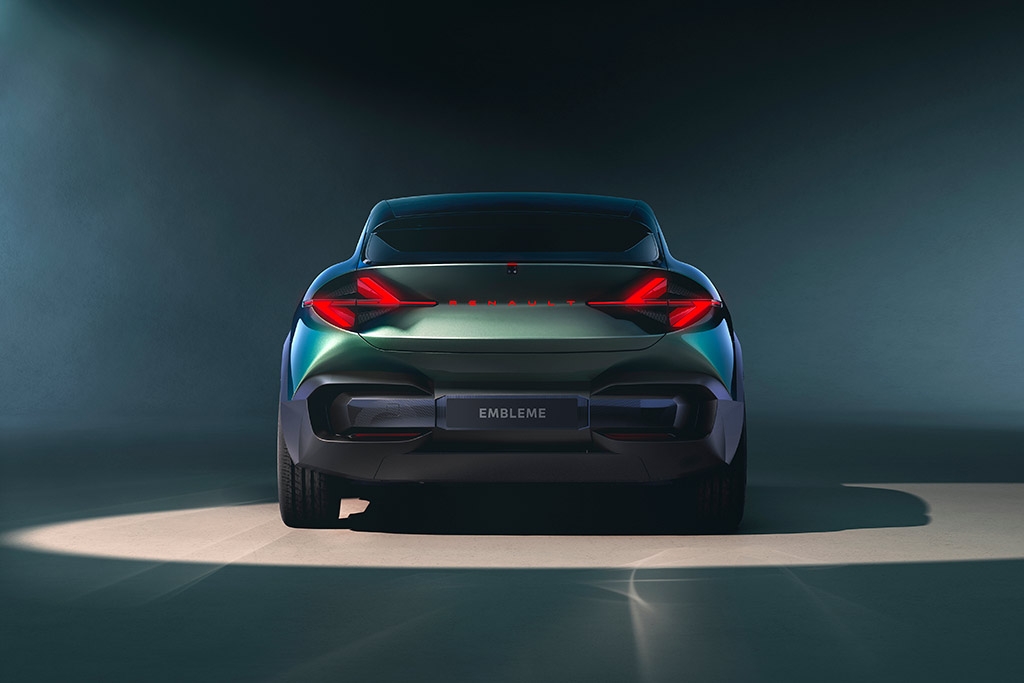Renault unveils Renault Embleme in partnership with Ampere
05 Nov 2024|109 views
With the automobile industry undergoing a major transformation due to climate change and dwindling resources, Renault and its electric vehicle subsidiary, Ampere have unveiled the Renault Embleme demo car at the Mondial de l'Auto 2024.
As Renault is targeting carbon neutrality in Europe by 2040 and worldwide by 2050, Ampere is leading the brand's decarbonisation drive, convinced that technological innovation is the key to a sustainable future.
The Embleme is a vision of a fully decarbonised family vehicle, emitting 90% less greenhouse gases over its entire life cycle than similar current vehicles.
In addition, with a 70% reduction in the carbon footprint of its components, 50% recycled materials, and over 90% of recyclable materials, the Embleme demonstrates Ampere and its partners' capabilities to maximise vehicle decarbonisation.
Based on the principles of eco-design, the Embleme measures 4,800mm long, with a 2,900mm wheelbase and height of 1,520mm. Its rear-mounted dual-energy electric powertrain is powered by electricity and hydrogen, ideal for low-carbon driving over both short and long distances.
In its interior, recycled and recyclable polyester was used in the foam, upholstery, and seat seams, with the polyester getting its colour from weaving four different-coloured threads, which eliminates the needs for dyes.
And as expected of modern concept cars, the Embleme gets a high-tech cockpit too, which incorporates a curved 'openR' panorama screen, measuring 1200mm wide and 120mm tall, that spans to the full width of the dashboard. The setup is said to offer an "unprecedented multimedia experience" for both the driver and front passenger. In spite of the heavy digitalisation of it all, Ampere notes that the car will retain a single rotary knob to continue to make breezing through the infotainment functions an intuitive experience.
The Embleme runs on a 160kW wound-rotor electric motor powered by a dual-energy 40kWh nickel manganese cobalt battery, and a 30kW fuel cell running on low-carbon hydrogen from a 2.8kg tank under the front hood, delivering electric driving benefits like instant acceleration, silent running, and no vibrations.
Speaking of the battery, Ampere and Renault have noted that strategic partnerships are in place to ensure a sustainable supply of both nickel and lithium. Further down the line, plans for closed-loop recycling are already afoot, with the firms aiming to rely on 80% of recycled strategic materials for new batteries by 2030.
Based on the AmpR Medium platform for better performance and efficiency, the Embleme can cover up to 1,000km at the same time as an equivalent internal combustion engine (ICE) vehicle. Because of the car's fuel cell stack, Ampere also states that drivers won't have to plug the car in at a charging point if they so wish - and can instead rely on hydrogen refuelling, through which two stops of less than five minutes can already deliver a range of 350km.
Finally, the Embleme is envisioned to rely on artificial intelligence as a means of enhancing the robustness of its driving assistance systems, as well as to optimise its energy efficiency.
An example of the latter includes utilising geolocation data to anticipate road conditions ahead, which in turn, can predictively adapt the car's driving based on factors such as the road layout or changes in speed limits.
With the automobile industry undergoing a major transformation due to climate change and dwindling resources, Renault and its electric vehicle subsidiary, Ampere have unveiled the Renault Embleme demo car at the Mondial de l'Auto 2024.
As Renault is targeting carbon neutrality in Europe by 2040 and worldwide by 2050, Ampere is leading the brand's decarbonisation drive, convinced that technological innovation is the key to a sustainable future.
The Embleme is a vision of a fully decarbonised family vehicle, emitting 90% less greenhouse gases over its entire life cycle than similar current vehicles.
In addition, with a 70% reduction in the carbon footprint of its components, 50% recycled materials, and over 90% of recyclable materials, the Embleme demonstrates Ampere and its partners' capabilities to maximise vehicle decarbonisation.
Based on the principles of eco-design, the Embleme measures 4,800mm long, with a 2,900mm wheelbase and height of 1,520mm. Its rear-mounted dual-energy electric powertrain is powered by electricity and hydrogen, ideal for low-carbon driving over both short and long distances.
In its interior, recycled and recyclable polyester was used in the foam, upholstery, and seat seams, with the polyester getting its colour from weaving four different-coloured threads, which eliminates the needs for dyes.
And as expected of modern concept cars, the Embleme gets a high-tech cockpit too, which incorporates a curved 'openR' panorama screen, measuring 1200mm wide and 120mm tall, that spans to the full width of the dashboard. The setup is said to offer an "unprecedented multimedia experience" for both the driver and front passenger. In spite of the heavy digitalisation of it all, Ampere notes that the car will retain a single rotary knob to continue to make breezing through the infotainment functions an intuitive experience.
The Embleme runs on a 160kW wound-rotor electric motor powered by a dual-energy 40kWh nickel manganese cobalt battery, and a 30kW fuel cell running on low-carbon hydrogen from a 2.8kg tank under the front hood, delivering electric driving benefits like instant acceleration, silent running, and no vibrations.
Speaking of the battery, Ampere and Renault have noted that strategic partnerships are in place to ensure a sustainable supply of both nickel and lithium. Further down the line, plans for closed-loop recycling are already afoot, with the firms aiming to rely on 80% of recycled strategic materials for new batteries by 2030.
Based on the AmpR Medium platform for better performance and efficiency, the Embleme can cover up to 1,000km at the same time as an equivalent internal combustion engine (ICE) vehicle. Because of the car's fuel cell stack, Ampere also states that drivers won't have to plug the car in at a charging point if they so wish - and can instead rely on hydrogen refuelling, through which two stops of less than five minutes can already deliver a range of 350km.
Finally, the Embleme is envisioned to rely on artificial intelligence as a means of enhancing the robustness of its driving assistance systems, as well as to optimise its energy efficiency.
An example of the latter includes utilising geolocation data to anticipate road conditions ahead, which in turn, can predictively adapt the car's driving based on factors such as the road layout or changes in speed limits.
Latest COE Prices
November 2025 | 1st BIDDING
NEXT TENDER: 19 Nov 2025
CAT A$110,002
CAT B$115,001
CAT C$76,000
CAT E$121,010
View Full Results Thank You For Your Subscription.


























